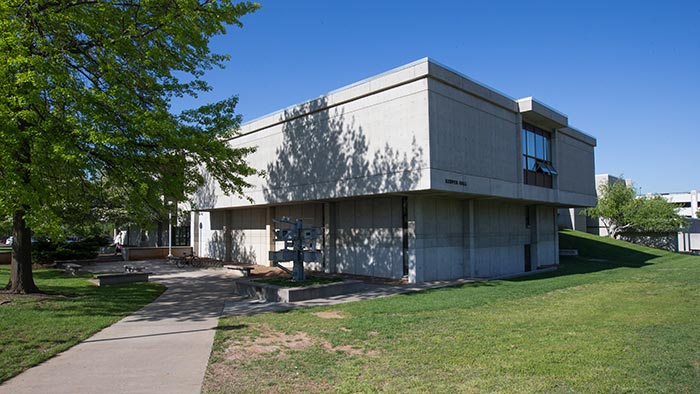
PAMS Seminar: "Conformer-specific Desorption in Interstellar Ices Probed by Chirped-pulse mm-Wave Rotational Spectroscopy" by Dr. Bernadette M. Broderick

- Date and time
- 4:00 PM - 5:00 PM, February 08, 2024
- Description
Dr. Bernadette M. Broderick
University of Missouri
Department of ChemistryAbstract:
A new technique developed by our group for the detection of molecules desorbed from an ice surface using broad-band rotational spectroscopy will be presented. The approach permits interrogation of molecules that have undergone the slow warmup process of temperature-programmed desorption (TPD), analogous to the warmup phase of icy grains in the interstellar medium as they approach the central protostar. The detection is conformer- and isomer-specific and quantitative, as afforded by chirped-pulse rotational spectroscopy. To achieve this, we combine ice TPD with buffer gas cooling, followed by detection in the millimeter-wave regime. In this presentation, the sublimation of n- and ipropanol, the former of which may be in five different conformational isomeric forms, and which display distinct desorption profiles, will be described. The limited conformational isomerization and temperature-dependent relative yields of n-propanol conformers observed show that the desorption is highly conformer-specific. In addition to propanol, the sublimation of propyl cyanide will also be presented, where the relative abundances of the anti and gauche conformers following room-temperature gas-phase injection into a 25 K buffer gas cell are compared to that which is observed following TPD from an ice surface. The conformer distributions observed in the gas phase from room-temperature injection are then used to determine their relative energies, an important parameter needed to interpret the isomer and conformer abundances derived from astronomical observations. We find the gauche conformer to be the most stable species by ~97±21 cm-1. We further examine the relative conformer abundances following ice desorption, which are distinct from those following the gas-phase introduction. The ratios measured off the ice correspond to a conformer temperature of ~56 K, which is much lower than their sublimation temperature of 170 K.
- Event sponsor
- Physics, Astronomy and Materials Science
- Admission
Free
- Open to public, alumni, current students, faculty, future students, staff
- Location
Additional information
- Event contact
- Tiglet Besara
- Assistant Professor
- tigletbesara@missouristate.edu
- 417-836-6298
- Visit website
